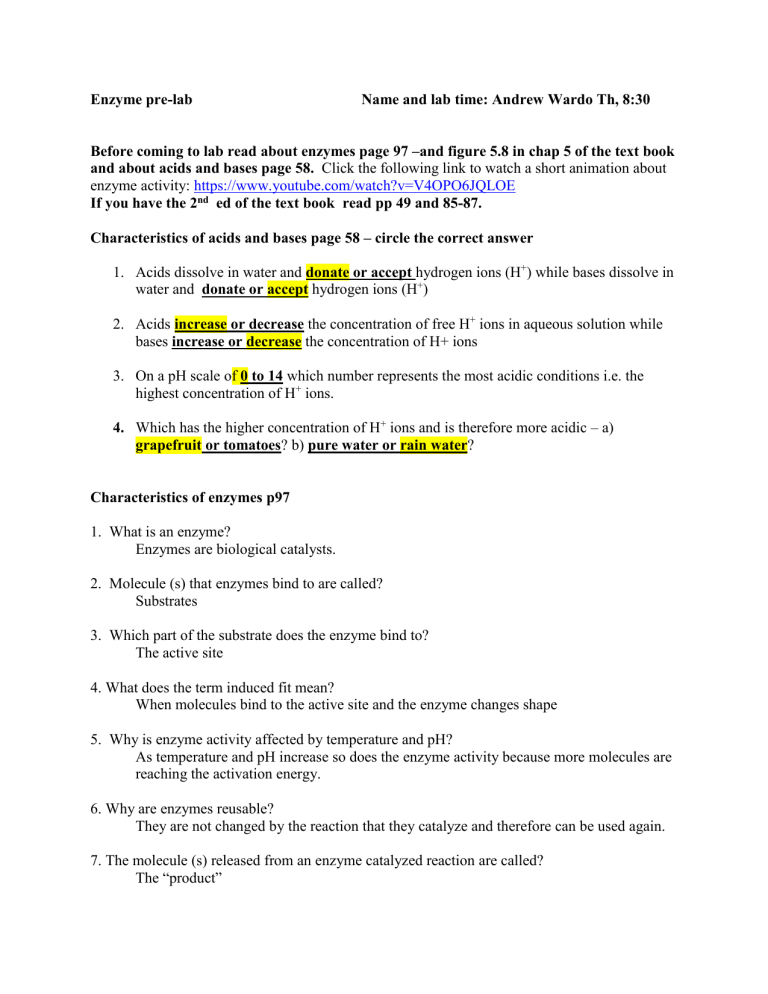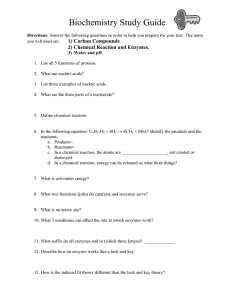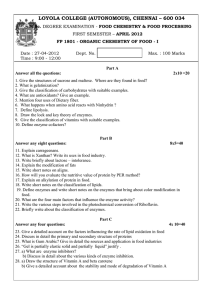Enzyme Pre-Lab Worksheet: Acids, Bases, and Enzyme Activity
advertisement

Enzyme pre-lab Name and lab time: Andrew Wardo Th, 8:30 Before coming to lab read about enzymes page 97 –and figure 5.8 in chap 5 of the text book and about acids and bases page 58. Click the following link to watch a short animation about enzyme activity: https://www.youtube.com/watch?v=V4OPO6JQLOE If you have the 2nd ed of the text book read pp 49 and 85-87. Characteristics of acids and bases page 58 – circle the correct answer 1. Acids dissolve in water and donate or accept hydrogen ions (H+) while bases dissolve in water and donate or accept hydrogen ions (H+) 2. Acids increase or decrease the concentration of free H+ ions in aqueous solution while bases increase or decrease the concentration of H+ ions 3. On a pH scale of 0 to 14 which number represents the most acidic conditions i.e. the highest concentration of H+ ions. 4. Which has the higher concentration of H+ ions and is therefore more acidic – a) grapefruit or tomatoes? b) pure water or rain water? Characteristics of enzymes p97 1. What is an enzyme? Enzymes are biological catalysts. 2. Molecule (s) that enzymes bind to are called? Substrates 3. Which part of the substrate does the enzyme bind to? The active site 4. What does the term induced fit mean? When molecules bind to the active site and the enzyme changes shape 5. Why is enzyme activity affected by temperature and pH? As temperature and pH increase so does the enzyme activity because more molecules are reaching the activation energy. 6. Why are enzymes reusable? They are not changed by the reaction that they catalyze and therefore can be used again. 7. The molecule (s) released from an enzyme catalyzed reaction are called? The “product”



